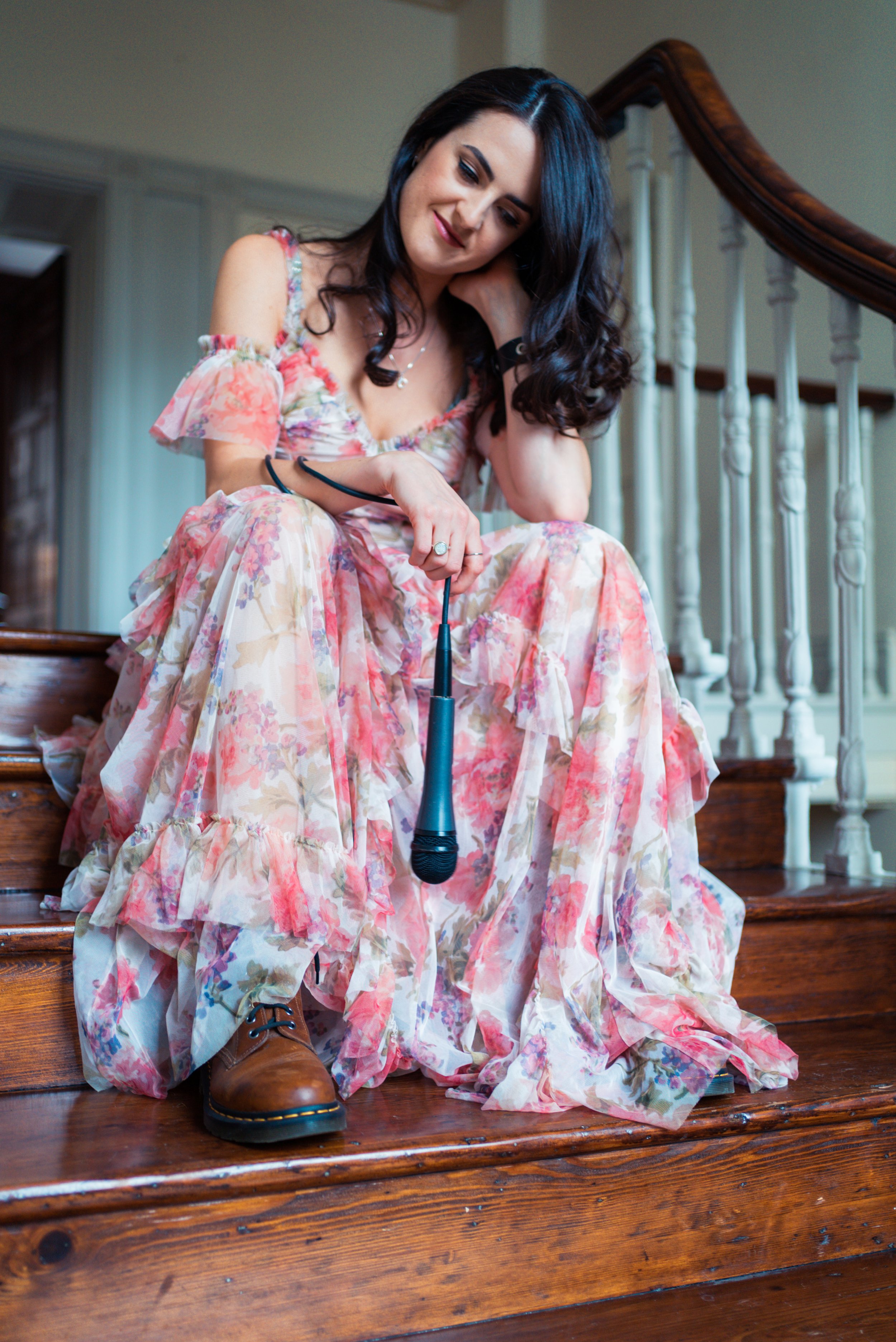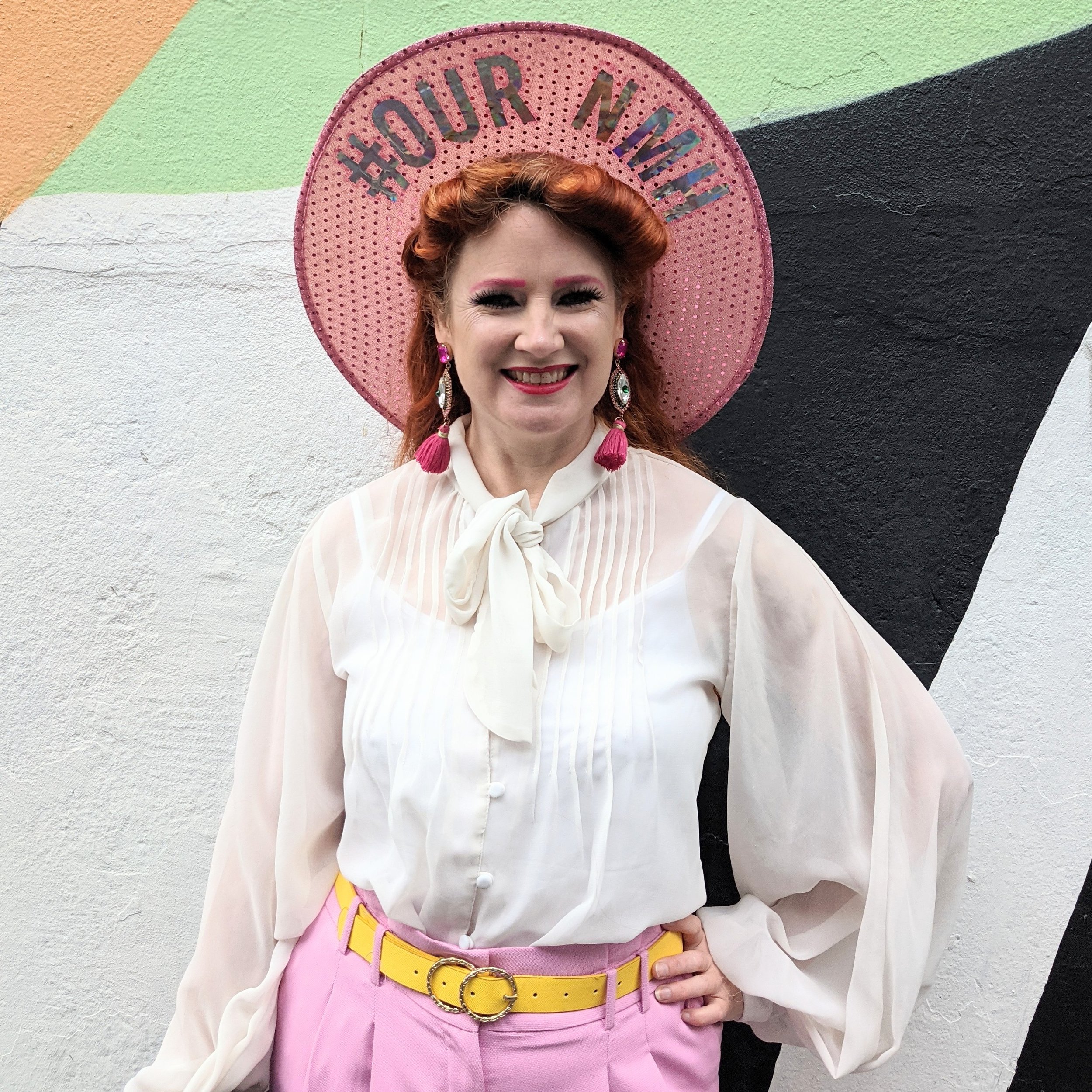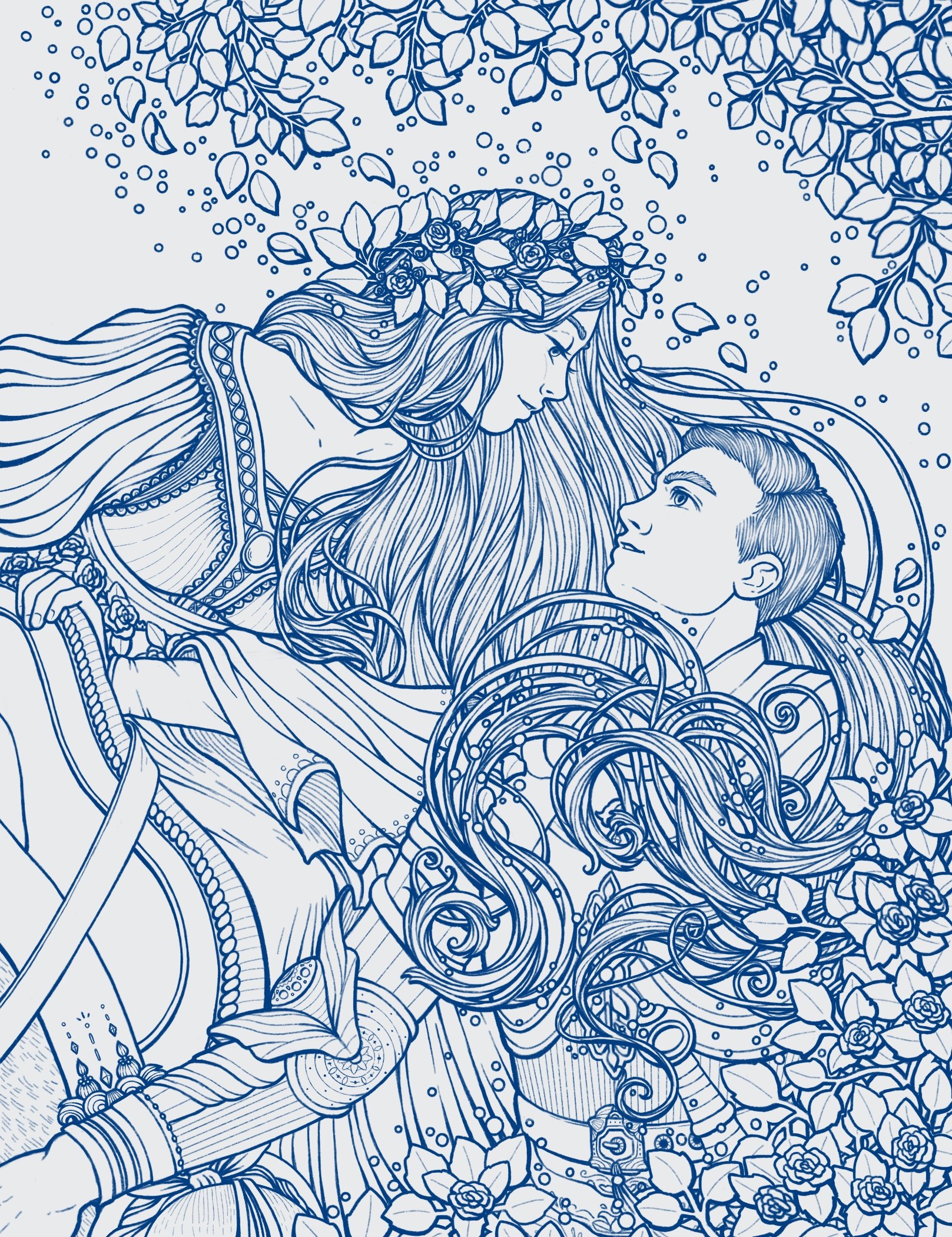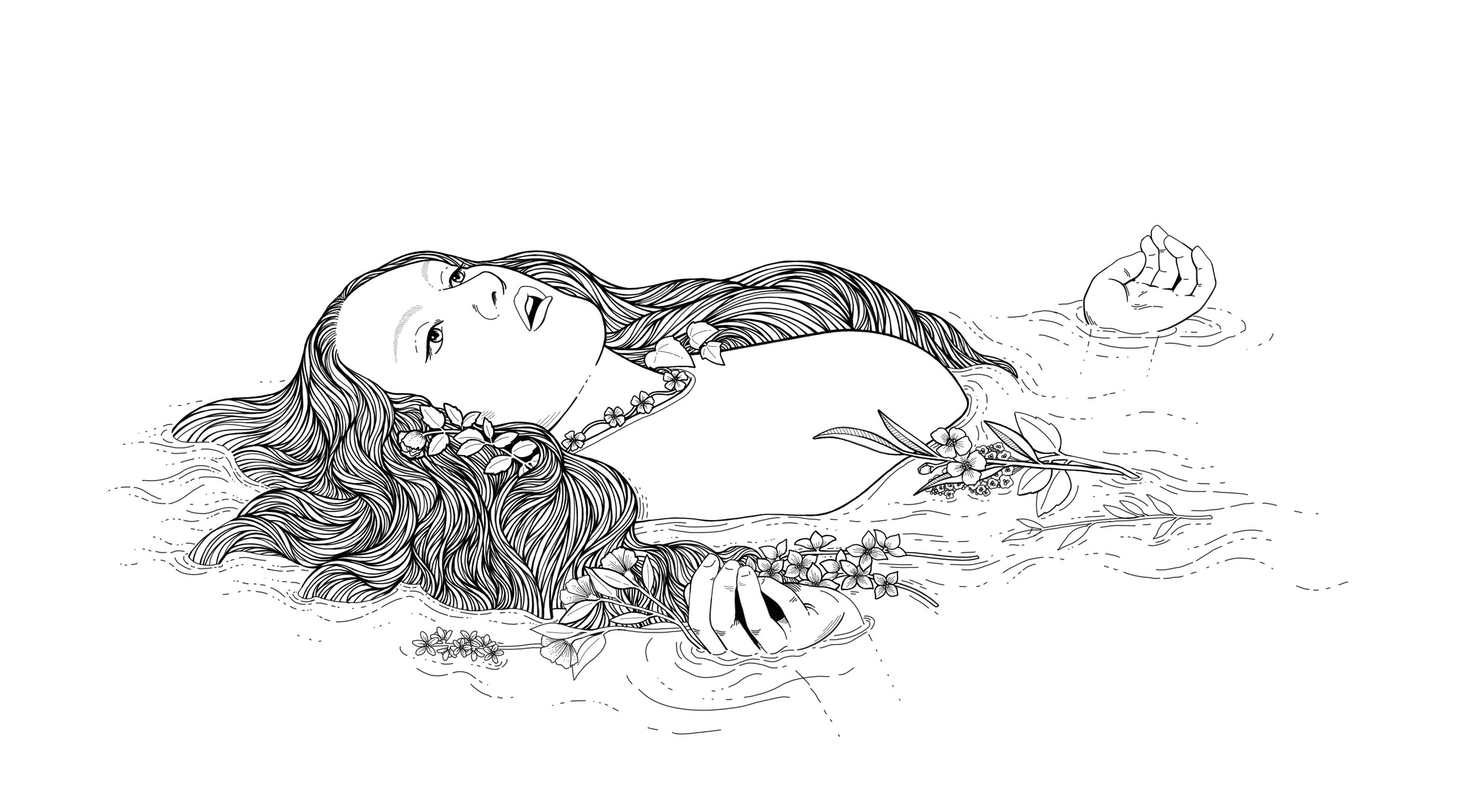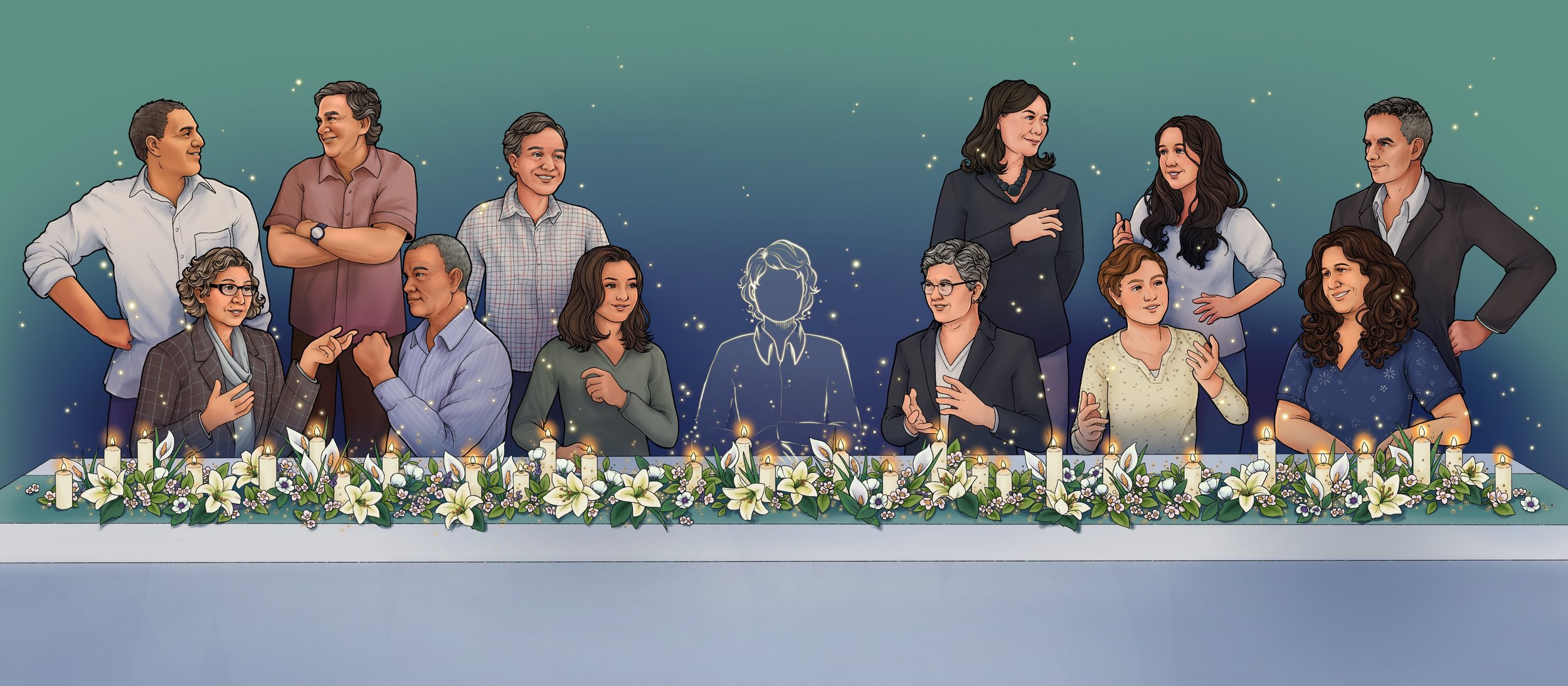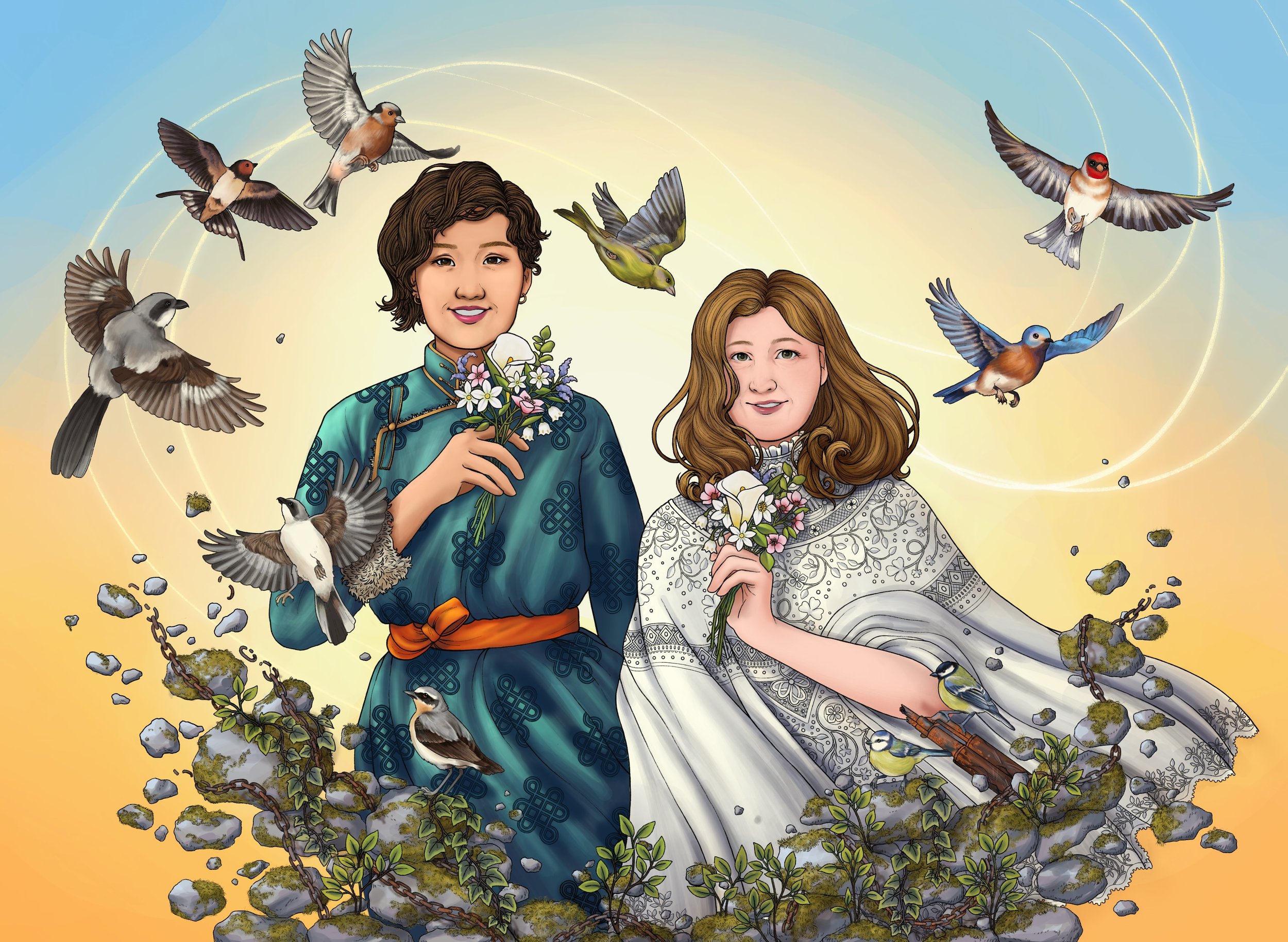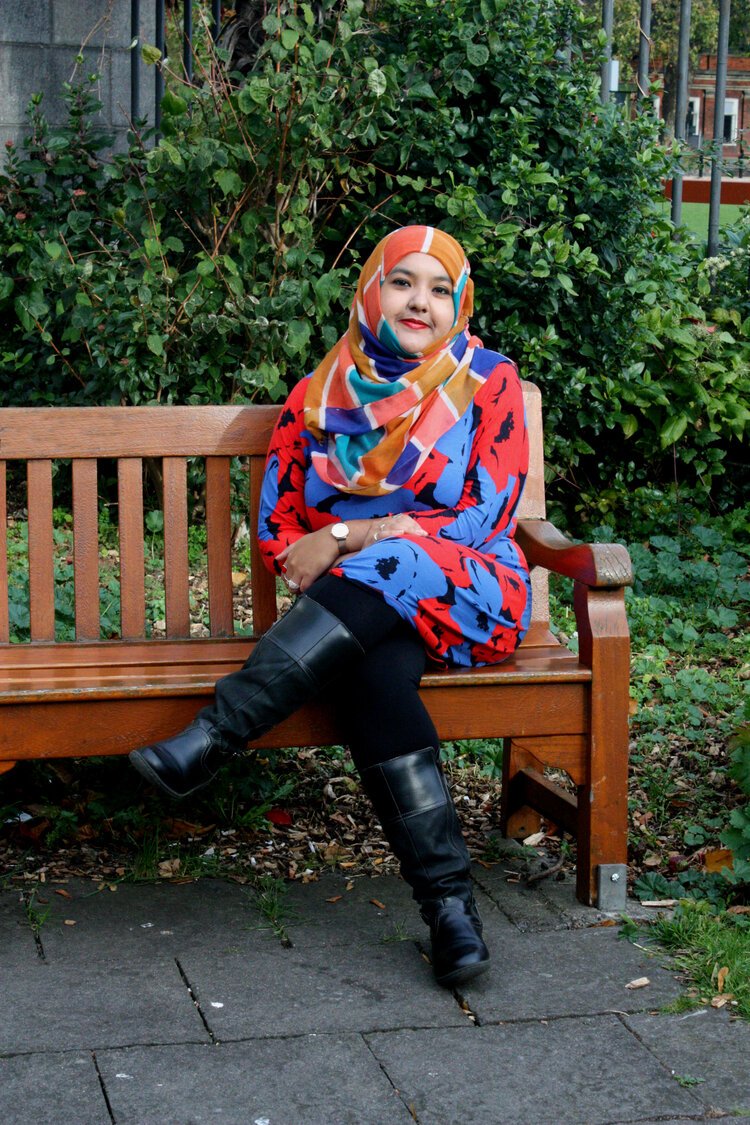Ciara Ní É
Bilingual Performer / Writer / Activist
Photo by Hannah McGlynn
Award-winning TV presenter and writer, Ciara Ní É, has been a regular presence in Irish national television and literary circles for a number of years. An ambassador of The Irish Writers Centre, her work has been published extensively in journals including Icarus, Aneas, and Comhar, and the recent anthologies Bone and Marrow/Cnámh agus Smior, Queering the Green and Washing Windows Too. She has written poems for UNESCO City of Literature, The Linenhall Arts Centre, RTÉ TV, BBC Radio and TG4, and has performed them everywhere from Sweden and London to Brussels and New York.
Photo by Hannah McGlynn
Born in Clontarf, Dublin as the middle child of five children, Ciara Ní É did not grow up speaking Irish at home, but rather was inspired by two of her teachers who taught it through music, theatre and fun when she was in sixth class. Her interest in the language was further encouraged by her parents who began sending her to the Gaeltacht (Coláiste Chamuis, Ros a’ Mhil) every summer from when she turned 12. It was here and at Trinity college where she studied English Literature and Modern Irish for her undergrad, that she developed a real grá for Gaeilge.
Ciara speaking at Listowel Writer’s Week
Following a year in London working as an Editorial Assistant for publisher Dorling Kindersley, Ciara returned to Ireland to pursue a job working with the Irish language. But first, she needed to improve, so she signed up for UCD’s Scríobh agus Cumarsáid na Gaeilge where she took classes in editing, translation, and writing. Outside of her academic pursuits, Ciara founded REIC in 2015, a monthly bilingual, and sometimes multilingual, spoken word event featuring poetry, rap, music and storytelling. REIC (pronounced 'wreck') grew from a desire to give a platform to artists who write in Irish, and to create a relaxed space where performing as Gaeilge is expected and encouraged, which inspires more performers to make use of the Irish they have.
Crowds at Dublin Castle in May 2015 when gay marriage was legalised in Ireland. Source: GCN
REIC came about the same year as the Marriage Equality referendum which passed by 62% in May 2015, making Ireland the first country in the world to approve same-sex marriage by popular vote. As a member of the LGBT+ community (or, LADT+ as gaeilge), Ciara recognises how important it is to be able to identify yourself within a language. Initially, as someone who came into the Irish-language scene as something of an outsider, Ciara felt doubly ostracised by the fact that she was also queer in this space where 'queer people were not common and queer groups did not seem to exist'. But that all changed during the Referendum when she joined 'Tá Comhionannas' a group of LGBTQ+ Gaeilgeoirí and allies who got together to campaign for the yes vote.
Ciara performing in Whelan’s
Following the referendum, Ciara was involved in organising Bród events (Pride events in Irish) from 2017 onwards. From this, in February 2020, Ciara and her close friend and collaborator Eoin McEvoy founded AerachAiteachGaelach (translation: GayQueerIrish) - a collective of 60+ queer artists, writers, musicians, actors, photographers and drag artists.
Photo by Hannah McGlynn
AAG was selected by The Abbey Theatre to take part in The Abbey 5x5, their annual development series for community theatre projects that enables the 5 chosen communities to engage with their national theatre for the first time. AAG, along with the other chosen projects, received five days’ worth of space, technical assistance and €5,000 to help in the development of a theatre piece. During AAG’s 5×5 week, they developed a bilingual, multi-disciplinary piece of work across poetry, drag, dance, singing, verbatim theatre, video and mythology that sought ‘to examine the similarities between the challenges faced by LGBT+ citizens and other groups in Ireland, exploring marginalisation, minoritisation, invisibility and erasure.’ AAG made the video below during lockdown to celebrate Bród 2020:
“This pandemic is a testing and bizarre time in all of our lives. It is abundantly clear that art and creativity are crucial in providing relief. When else has a national news broadcast ended with a poem?”
Ciara is also a YouTuber, where she shares her popular video series What the Focal in which she answers a variety of questions on the Irish language and explores various dialects from around the country. From 2017-18 she taught Irish to students at Villanovoa University in Philadelphia as a Fulbright Scholar and just this year, she was chosen as one of the Irish Examiner’s ‘100 Women Changing Ireland in 2022.’ What can we expect from Ciara in the near future? Well, she is currently co-writing an exciting new TV series with Tua Films, and her first poetry collection is forthcoming. To keep updated on her work, go to her website miseciara.wordpress.com.
You can follow Ciara on Twitter: @MiseCiara
You can check out An Foclóir Aiteach / The Queer Dictionary, developed by the USI, BelongTo and TENI, here.
Herstory by Katelyn Hanna.
Thank you to Ciara Ní É for providing information and photos for this biography.
Want to read about historical LGBTQ+ women? See our photo essay here.
Sources:
‘DCU Music and poet Ciara Ni É look to the future for project celebrating the end of COVID-19 crisis,’ online at: https://www.dcu.ie/news/news/2020/04/dcu-music-and-poet-ciara-ni-e-look-to-the-future-for-project-celebrating-the-end [accessed 13 Apr. 2022].
The Irish Times, 13 Mar. 2018.
‘5×5 2020,’ online at: https://www.abbeytheatre.ie/5x5-2020/ [accessed 13 Apr. 2022].
‘Ciara Ní É’, Seal le Dáithí, S4 E19, ar TG4, ar líne ag: https://www.tg4.ie/en/player/categories/entertainment-shows/?series=Seal%20le%20D%C3%A1ith%C3%AD&genre=Siamsaiocht [accessed 12 Apr. 2022].
‘An Foclóir Aiteach/The Queer Dictionary,’ online at: https://usi.ie/focloir-aiteach/ [accessed 13 Apr. 2022].
‘Pride2020 Video by AAG,’ online at: https://miseciara-wordpress-com.translate.goog/2020/07/08/fisean-brod2020-le-aag/?_x_tr_sl=ga&_x_tr_tl=en&_x_tr_hl=en&_x_tr_pto=sc [accessed 13 Apr. 2022].

